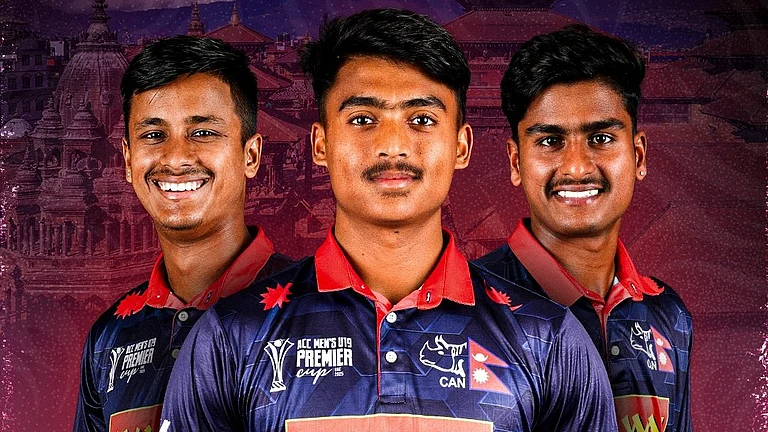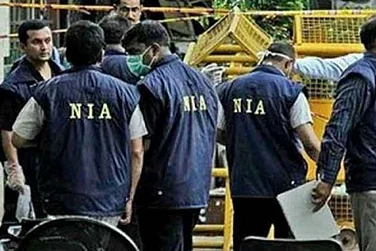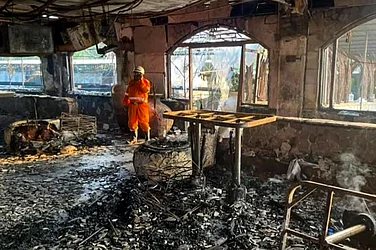THE rates are fixed. A local dai in katihar is paid Rs 100 for the delivery of a son and Rs 25 for a daughter. If the daughter is killed, the fee goes up to Rs 50.
"Yes, we kill baby girls for a pittance, says Adila Devi, a midwife in this eastern district of Bihar. "Poor people like us cannot protest. Many a father has been known to refuse us payment after we have killed the daughter, but who do we approach for justice?" Having helped deliver babies in the Teja Tola, Fasiya Tola and Budhuchak areas for over 40 years now, the sexagenarian midwife claims to have "done away" with more than 150 infant girls.
Adila's confession shocks no one in her Chamar basti. Most women in the basti earn their livelihood as dais. Most admit to having murdered unwanted baby girls at birth. And their tone is almost matter-of fact while discussing the large-scale killing of female infants in the area. "I have killed over 65 infant girls in the past 10 years as a dai," says Phool Devi. In her early 40s, this benign-looking grandmother says she has never questioned her client's order to kill a daughter. "Niyam hain yahan (It's the practice here)," she explains.
For generations, female infants in the interior districts of Bihar have been routinely killed before they have seen the light of day outside the saurighar (delivery room). The methods of killing are as simple as they are varied. The baby girls are usually strangled with a length of rope. Sometimes the dai snaps the spine by bending it backwards. A handful of fertiliser pushed down the baby's throat also does the job. A lump of black salt placed in the newborn's mouth, experienced dais say, takes an hour to kill the infant.
The less-experienced midwives, however choose to suffocate the baby by stuffing her into a clay pot and sealing the lid with fresh dough. The baby dies within two hours. "This way one doesn't actually have to see the baby dying," Phool points out.
For, witnessing an infant's death can make even the most experienced dai shudder, she says. "Strangling makes the tongue hang out and urea makes her eyes bulge. It's a ghastly sight--even the most hardened of us cannot sleep for days after the deed is done.
It is not so much the act but the aftermath that seems to haunt the midwives. "The fear that some wild animal might drag the infant carcass out of the undergrowth where I have dumped it makes me break into cold sweat," says Seema Devi. Most dais in the area, she adds, dispose of the bodies in the nearby Kolasi ghat and Chaumukhi stream. "It torments me to think that I have deprived so many souls of last rites," she murmurs.
But Phool is quick to pin the "sin" on the father of the child. "We hardly have any choice in the matter," she argues.
Adila agrees, saying that the instruction to kill the child usually comes from the patriarch of the family. As soon as the baby's sex is whispered to the father, and it is a girl, he orders the dai to kill her. Refusal to carry out the order would mean risking violent retribution.
"I won't pretend unusual courage," says Bhagni, a dal from the nearby Manihari area. "Irate fathers threatening to skin me alive can make me kill and not even a hysterical mother can change my mind." She recalls the pitiful pleas of a mother whose infant she had been ordered to kill three weeks ago. Even as the mother cried for her first-born daughter's life, her husband threatened to smash the child's head against the wall. And yet another saurighar death occurred in Bihar.
Significantly, these unreported deaths carried out by the Chamars are an upper caste malaise in caste-ridden Bihar. The superior status of the Rajputs, Bhumihars and Brahmins in society finds expression in demands for hefty dowries. And intrinsic to the dowry system is a bias against the female. Girls are seen as "burdens" that must be "offloaded".
Marriage to a groom who is a professional could cost a Rajput bride's parents up to Rs 5 lakh in hard cash alone. Add to that thecost of jewellery, gifts and the wedding cele- brations , and the expenses can mount to Rs 12 lakh. "Bhumihars have to pay as much as Rs 16-Rs 20 lakh as tilak (dowry) for their daughters. And many families have four to five daughters. Can you then blame a father for deciding to kill his daughter?" asks Shano,a dal from Kadaipura.
Some of the dais, in fact, seem to have convinced themselves that they are carrying out mercy killings. Shano, for instance, feels she is "liberating" female souls by snuffing them out before they experience prejudice in a male chauvinistic world.
The gender bias, in fact, is very evident. While the boys are given milk, the girls have to be content with water. "In Mithelesh, a woman kept her female infant alive on water for three months--till the baby died. Had she lived, she would have led a death-like life for the lack of adequate dowry. It's better that we spare the girl this agony," Shano reasons.
This resignation to the fate of the girl child has become an inherent part of Bihar's society. Whereas most "enlightened" people in Katihar are quick to condemn female infanticide as a social evil, they show little enthusiasm in combating the dowry system which is its root cause.
"The system of tilak cannot be obviated from the marriage marts of Bihar in view of the rising consumerism," says Indu Shekhar Chowdhary, a teacher of chemistry in Katihar's DS College. Chowdhary claims to be losing sleep over the impending marriage of his 20-year-old daughter who graduates from Delhi University this year. "The going rates for professional boys in our Bhumihar community are very high. But, we are hopeful of a discount of about Rs 2 lakh on account of our daughter's English education and milky white complexion," says the harried father.
Educating one's daughter can, however, add to the problem of dowry in his caste, says Dr Dev Dutt Jha, a Maithil Brahmin. A post-graduate girl is loathe to marry an illiterate landowner and an IAS groom costs much more. "The issue is too complex to have easy solutions," he observes.
But the self-styled community leaders tend to rationalise dowry. Dr Bhola Singh, president of the Brahmshri Sena which represents Bhumihar landlords, says: "The desire to provide as much as we can for our daugh ters at the time of marriage is indicative of our aspirations for them." As for female infanticide, he dismisses it as a practice confined to "other castes".
The police goes a step further and denies the existence of female infanticide in the area. No FIR regarding the crime has been lodged in any of the district's thanas, says Katihar SP, Shatrughan Prasad Singh: "Nothing on paper suggests that female infants are killed in this district." Singh complains that social workers who claim that the dais confess to the killings before them, refuse to provide the police with any evidence or names.
"And why should we," exclaims Anila Kumari of the Bal Mahila Kalyan (BMK), a Katihar-based NGO that is working among the area's dais to eradicate female infanti- cide. Turning police informer would alienate the dais from the organisation. Moreover , having a few of them arrested would serve no purpose at all. The BMK's aim is to educate the dais and give them the confidence to refuse to kill even when commanded, Anila emphasises. "As for the police, they are much better equipped than us to do their own sleuthing. Let them not pretend helplessness. A serious attempt to discover the truth would reveal how rampant the practice is in our state.
Adithi, a Patna-based women's NGO partly funded by UNICEF recently released a report on female infanticide in Bihar in which midwives from various parts of the state admitted to killing infant girls. Also, based on the evidence collected by its held workers in Sitamarhi, Purnea, Bhagalpur and Katihar districts, the report estimated that 1,63,200 female infants are killed in Bihar every year.
"Needless to say, the State Government has neither denied nor confirmed receiving copies of the report," says Viji Srinivasan of Adithi. To increase awareness, the NGO has begun organising workshops on female infanticide in villages.
Some pragmatic solutions to curb female infanticide emerged from one such grass- roots meeting in Bihpur recently. The area dais agreed to "tell" the local social worker about the killing of a female child on being given Rs 25. A resolution was passed to form local committees comprising parents and dais which would monitor births and deaths in the area.
However, while such measures are welcome, social workers point out that they cannot substitute government initiatives like making birth and death certificates mandatory, issuing guest control orders for weddings and organising large-scale publicity against female infanticide. And as Srinivasan adds, "The Government must start working towards some decent shelters for baby girls. Five years away from the 21st century, let us at least be civilised enough to abandon the girl child and not butcher her." There may be cause for hope yet.
(The names of the dais have been changed.)


























